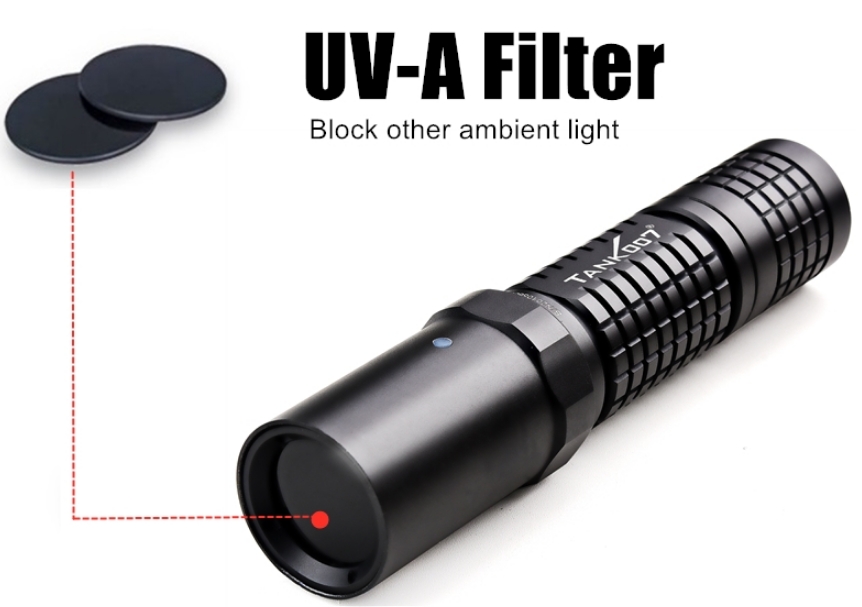The post The Most Spectacular Fluorescent Mineral Discoveries with UV Light appeared first on Tank007.
]]>1. The Science Behind Fluorescent Minerals
Fluorescence in minerals occurs when certain elements, known as activators, absorb UV light and re-emit it as visible light. Common activators include manganese (Mn2?), uranium (UO2?), and lead (Pb2?).
Key Factors Influencing Fluorescence:
- Activator Elements: Essential for light emission.
- UV Wavelength: Shortwave UV (254 nm) often produces brighter fluorescence.
- Crystal Structure: Highly ordered structures enhance fluorescence.
Summary: The glow is a result of activator elements emitting visible light when excited by UV radiation.
2. Types of UV Light and Their Impact on Fluorescence

| Type of UV Light | Wavelength Range | Effect on Minerals |
|---|---|---|
| UV-A (Longwave) | 320–400 nm | Softer, less vibrant fluorescence. |
| UV-B (Midwave) | 280–320 nm | Moderate fluorescence, rarely used. |
| UV-C (Shortwave) | 100–280 nm | Produces the brightest fluorescence. |
Recommendation: For the most vivid mineral fluorescence, use UV-C (shortwave) light.
3. Top Fluorescent Mineral Discoveries
Here are some of the most breathtaking fluorescent minerals discovered around the world:
| Mineral Name | Location | Fluorescence Color | Activator Element |
|---|---|---|---|
| Willemite | Franklin, New Jersey, USA | Bright green | Manganese |
| Fluorite | Rogerley Mine, England | Blue or green | Rare Earth Elements (REEs) |
| Scheelite | Pingwu, China | Blue-white | Molybdenum |
| Calcite | Terlingua, Texas, USA | Red, pink, or orange | Manganese |
| Autunite | Portugal | Yellow-green | Uranium |
| Hackmanite | Afghanistan | Pink to violet | Sulfur |
Summary: Unique activator elements and locations contribute to the spectacular glow of these minerals.
4. The Franklin Mine, New Jersey: A Fluorescent Treasure Trove
Franklin Mine is globally renowned for its exceptional variety of fluorescent minerals, with over 350 species documented, 90 of which are fluorescent.
Notable Fluorescent Minerals from Franklin:
- Willemite: Green fluorescence due to manganese.
- Calcite: Red or pink glow under UV light.
- Hardystonite: Blue fluorescence caused by lead.
Key Insight: The combination of activators and unique geology makes Franklin Mine a hotspot for fluorescent minerals.
5. Comparison of Fluorescent and Non-Fluorescent Minerals
| Aspect | Fluorescent Minerals | Non-Fluorescent Minerals |
|---|---|---|
| Activator Elements | Present (e.g., Mn, Pb, REEs) | Absent or insufficient |
| UV Reaction | Glows brightly | No glow or very faint |
| Crystal Structure | Highly ordered | Often disordered |
| Examples | Willemite, Fluorite, Calcite | Quartz, Feldspar |
Conclusion: The presence of activator elements and a structured crystal lattice are key to fluorescence.
6. Most Spectacular Fluorescent Mineral Sites Worldwide
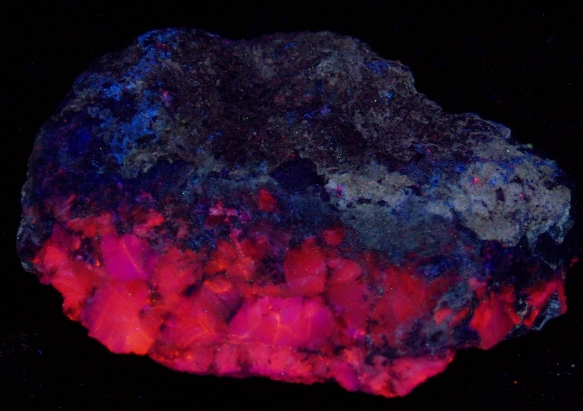
| Location | Country | Key Fluorescent Minerals | Highlight |
|---|---|---|---|
| Franklin Mine | USA | Willemite, Calcite, Hardystonite | Most diverse fluorescent minerals |
| Sterling Hill Mine | USA | Esperite, Willemite | Known for green and yellow glow |
| Rogerley Mine | England | Fluorite | Famous for daylight fluorescence |
| Langban Mine | Sweden | Calcite, Barite | Unique red and orange hues |
| Pingwu Mine | China | Scheelite | Intense blue-white glow |
Insight: Different geological formations contribute to the diversity of fluorescent minerals.
7. The Role of Impurities and Activators
Impurities in minerals act as activators that enable fluorescence. Common activators and their effects include:
| Activator | Common Minerals | Fluorescence Color |
|---|---|---|
| Manganese (Mn2?) | Calcite, Rhodonite | Red, pink, or orange |
| Uranium (UO2?) | Autunite, Uranophane | Green or yellow-green |
| Lead (Pb2?) | Willemite, Scheelite | Blue or green |
| Rare Earth Elements (REEs) | Fluorite, Apatite | Blue, green, or yellow |
Summary: The type of activator element directly influences the fluorescence color.
8. Common Challenges in Fluorescence Observation
| Challenge | Impact | Solution |
|---|---|---|
| Ambient Light | Reduces fluorescence visibility | Observe in complete darkness. |
| Incorrect UV Wavelength | Fails to excite certain minerals | Use UV-C (shortwave) for best results. |
| Contaminants on Minerals | Blocks UV light absorption | Clean minerals thoroughly. |
Tip: For the best results, use a UV-C flashlight in a dark environment.
9. Summary of Spectacular Fluorescent Mineral Discoveries
| Mineral | Location | Fluorescence Color | Notable Activator |
|---|---|---|---|
| Willemite | Franklin, USA | Green | Manganese |
| Fluorite | Rogerley, England | Blue or green | Rare Earth Elements (REEs) |
| Scheelite | Pingwu, China | Blue-white | Molybdenum |
| Hackmanite | Afghanistan | Pink to violet | Sulfur |
Conclusion: Understanding activators, UV wavelengths, and crystal structures is essential for exploring the beauty of fluorescent minerals.
The post The Most Spectacular Fluorescent Mineral Discoveries with UV Light appeared first on Tank007.
]]>The post Why Do Some Minerals Glow Under UV Light? appeared first on Tank007.
]]>1. The Science Behind Fluorescence in Minerals

Fluorescence occurs when a mineral absorbs UV light and then emits visible light as electrons return to their original energy levels. The emitted light is often a different color than the absorbed UV light, producing the glow that we see.
Key Steps in Fluorescence:
- Absorption: UV light excites electrons in the mineral.
- Transition: Excited electrons move to higher energy levels.
- Emission: As electrons return to lower levels, they release energy as visible light.
Summary: The glow is a result of electrons releasing energy in the form of visible light after being excited by UV radiation.
2. Types of UV Light and Their Effects
There are three main types of UV light that influence mineral fluorescence:
| Type of UV Light | Wavelength Range | Effect on Minerals |
|---|---|---|
| UV-A (Longwave) | 320–400 nm | Common in UV flashlights, causes soft glow. |
| UV-B (Midwave) | 280–320 nm | Rarely used, can cause moderate fluorescence. |
| UV-C (Shortwave) | 100–280 nm | Most effective for bright fluorescence in minerals. |
Recommendation: For mineral enthusiasts, a UV-C (shortwave) flashlight is ideal due to its ability to reveal vibrant fluorescence.
3. Why Only Some Minerals Glow: The Role of Activators
Not all minerals fluoresce under UV light. The presence of certain activator elements is essential for fluorescence to occur.
| Activator Elements | Examples of Minerals | Fluorescent Colors |
|---|---|---|
| Manganese (Mn2?) | Calcite, Rhodonite | Red, pink, or orange |
| Uranium (UO2?) | Autunite, Uranophane | Green or yellow-green |
| Lead (Pb2?) | Willemite, Scheelite | Blue or green |
| Rare Earth Elements (REEs) | Fluorite, Apatite | Blue, green, or yellow |
Summary: The presence and type of activators significantly affect the fluorescence color and intensity.
4. The Role of Crystal Structure in Fluorescence
Crystal structure impacts how UV light is absorbed and re-emitted:
- Highly ordered crystals: More likely to fluoresce due to uniform paths for electron movement.
- Disordered or impure crystals: Less likely to fluoresce effectively.
| Crystal Type | Fluorescence Likelihood | Examples |
|---|---|---|
| Cubic (Isometric) | High | Fluorite, Halite |
| Hexagonal | Moderate | Apatite, Beryl |
| Amorphous | Low | Opal, Obsidian |
Conclusion: Minerals with more structured and uniform crystals exhibit stronger fluorescence.
5. Comparison of Fluorescent vs. Non-Fluorescent Minerals
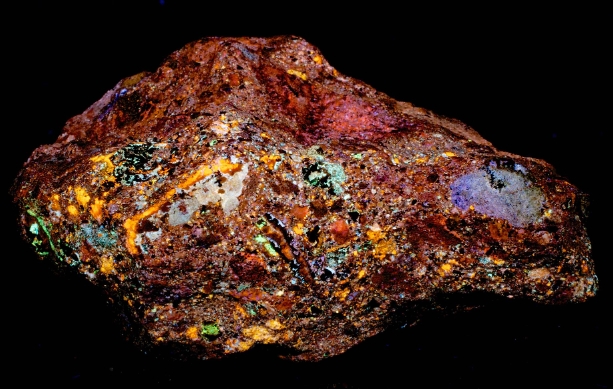
| Aspect | Fluorescent Minerals | Non-Fluorescent Minerals |
|---|---|---|
| Activator Elements | Present (e.g., Mn, Pb, REEs) | Absent or insufficient |
| Crystal Structure | Highly ordered | Often disordered |
| UV Light Reaction | Glows under UV light | No glow or very faint |
| Examples | Calcite, Fluorite, Willemite | Quartz, Feldspar, Hematite |
Summary: The presence of activator elements and crystal structure quality distinguish fluorescent minerals from non-fluorescent ones.
6. Common Fluorescent Minerals and Their Colors
| Mineral | Common Activator | Fluorescence Color |
|---|---|---|
| Fluorite | Rare Earth Elements | Blue, green, or yellow |
| Calcite | Manganese | Red, pink, or orange |
| Willemite | Zinc or Lead | Green |
| Scheelite | Molybdenum | Blue-white |
Tip: Knowing the activator can help predict the fluorescence color of a mineral.
7. Why Some Minerals Do Not Fluoresce
Non-fluorescent minerals lack the essential activator elements or have impurities that absorb UV energy without re-emitting visible light.
Common Reasons for Lack of Fluorescence:
- Absence of activators: No elements to facilitate light emission.
- Presence of quenchers: Elements like iron (Fe) can absorb UV energy without emitting light.
- Disordered crystal structure: Prevents uniform electron transitions.
Conclusion: The lack of appropriate activators or the presence of quenchers is why many minerals do not fluoresce.
8. Practical Applications of Fluorescent Minerals
| Application | Purpose | Example Minerals |
|---|---|---|
| Mining | Identifying ore bodies | Scheelite (for tungsten), Willemite (for zinc) |
| Geology and Fieldwork | Mineral identification | Fluorite, Calcite |
| Gemstone Authentication | Detecting fakes and enhancements | Diamond, Ruby |
| Collecting and Education | Display and learning | Various fluorescent minerals |
Summary: Fluorescent minerals have practical uses in mining, geology, and gemstone authentication.
9. Tips for Viewing Mineral Fluorescence
- Choose the Right UV Light:
- Preferably UV-C (shortwave) for vibrant fluorescence.
- Dark Environment:
- Perform observations in complete darkness for best results.
- Use Protective Gear:
- Avoid direct eye exposure to UV light.
- Keep Minerals Clean:
- Dust and grime can block UV light absorption.
Conclusion: Proper tools and a controlled environment enhance the visibility of mineral fluorescence.
10. Summary: Key Factors for Fluorescence in Minerals
| Key Factor | Importance | Recommendation |
|---|---|---|
| UV Wavelength | Determines visibility of fluorescence | Use 254 nm (UV-C) for best results. |
| Activator Elements | Essential for light emission | Check for Mn, Pb, or REEs. |
| Crystal Structure | Affects light absorption and emission | Prefer highly ordered crystals. |
| Absence of Quenchers | Prevents energy loss without light | Avoid minerals with high iron content. |
Conclusion: Understanding these key factors can help enthusiasts and professionals identify and appreciate the beauty of fluorescent minerals effectively.
The post Why Do Some Minerals Glow Under UV Light? appeared first on Tank007.
]]>The post UV Flashlight for Rocks: The Ultimate Guide for Rockhounds appeared first on Tank007.
]]>Why Use a UV Flashlight for Rocks?

UV light can reveal the fluorescent properties of certain minerals and rocks that are not visible to the naked eye. Fluorescence is the emission of visible light by a substance when it is exposed to UV light. This phenomenon occurs because certain minerals and rocks contain elements that react to UV light by glowing in vibrant colors.
Key Applications of UV Flashlights for Rocks
- Fluorescent Mineral Detection: Many minerals, like fluorite, calcite, and willemite, exhibit unique fluorescent colors when exposed to UV light, making them easier to identify.
- Mineral Identification: UV flashlights can help determine the authenticity and type of minerals based on their fluorescence patterns.
- Gemstone Inspection: UV flashlights are also used in gemstone and jewelry inspection, as they can reveal flaws or treatments that are invisible under normal lighting conditions.
Common Fluorescent Minerals and Their Colors
| Mineral | Fluorescent Color |
|---|---|
| Fluorite | Blue, Green, Purple |
| Calcite | Red, Orange, Yellow |
| Willemite | Green |
| Scheelite | Blue to White |
| Autunite | Yellow-Green |
| Opal | Greenish or blue (varies with type) |
By using a UV flashlight, these minerals can be revealed in all their fluorescent glory, helping rockhounds easily distinguish them from non-fluorescent rocks.
Types of UV Flashlights for Rocks
When purchasing a UV flashlight for rock and mineral identification, it’s important to consider the different types of UV lights, as they emit different wavelengths of UV radiation. The two most common types used for rock identification are 365nm UV light and 395nm UV light.
1. 365nm UV Flashlight
- Best For: High-quality fluorescence and deeper penetration, ideal for fluorescent minerals like fluorite and calcite.
- Pros: Provides deeper UV light that can reveal more vibrant fluorescent colors in minerals. 365nm light is commonly used by professionals and collectors.
- Cons: May be less visible under regular lighting since it emits less visible light.
2. 395nm UV Flashlight
- Best For: General rock identification and quick fluorescence checks.
- Pros: Easier to spot the fluorescence under normal lighting, as 395nm emits a bit more visible light.
- Cons: Slightly weaker in detecting deeper fluorescence compared to 365nm.
| Wavelength | Best For |
|---|---|
| 365nm | Ideal for deep fluorescence, professional-grade use. |
| 395nm | Good for casual or beginner use, general fluorescence. |
What to Look for When Buying a UV Flashlight for Rocks

To ensure you get the best UV flashlight for your mineral and rock hunting needs, here are the key features to consider:
1. Wavelength
- 365nm is ideal for professional use and deep fluorescence, providing the best results for rocks like fluorite and calcite.
- 395nm is generally better for casual use and can reveal visible fluorescence more easily.
2. Power (Wattage)
The power of the flashlight determines how intense the UV light is. Higher wattage provides stronger UV light, which is helpful for fluorescent minerals with low fluorescence.
| Power (Wattage) | Best For |
|---|---|
| 3W-5W | General use, good for hobbyists or beginner rockhounds. |
| 5W-10W | Professional or larger-scale mineral identification. |
| 10W+ | Ideal for industrial or in-depth fluorescence work. |
3. Battery Type
- Rechargeable batteries (Lithium-ion, USB) are more cost-effective in the long run and offer longer runtimes for prolonged fieldwork.
- Disposable batteries (AA, AAA) are convenient and easy to replace, but require frequent changes.
| Battery Type | Best For |
|---|---|
| Rechargeable | Ideal for frequent use with longer battery life. |
| Disposable | Convenient for short-term use and quick tasks. |
4. Durability and Build Quality
For outdoor use, a durable, water-resistant flashlight is crucial. Aluminum construction with a high IP rating (e.g., IP65) ensures the flashlight will withstand harsh conditions.
| Material | Best For |
|---|---|
| Aluminum | Lightweight, durable, and resistant to corrosion. |
| Plastic | Budget-friendly, but may not be as durable or rugged. |
Top UV Flashlights for Rockhounds and Mineral Collectors
Here are some of the best UV flashlights for rocks and mineral detection in 2025:
1. TANK007 K9A5 UV Flashlight
Wavelength: 365nm
Power: 5W
Battery Type: USB Rechargeable
Best For: Professional mineral detection and rockhounding.
- Key Features:
- Emits 365nm UV light for deep fluorescence detection, ideal for minerals like fluorite and calcite.
- USB rechargeable for long-term use and convenience in the field.
- Compact and durable aluminum body with water-resistant design.
Why Choose It: The TANK007 K9A5 offers the best UV output for rock and mineral collectors who need accurate fluorescence detection in outdoor settings.
2. Convoy S2+ UV Flashlight
Wavelength: 365nm
Power: 3W
Battery Type: Rechargeable 18650 Battery
Best For: Hobbyists and casual rockhounds.
- Key Features:
- Compact design and strong 365nm UV output for excellent fluorescence detection.
- Affordable and perfect for beginners and hobbyists.
Why Choose It: The Convoy S2+ is a great budget-friendly option for those just starting with mineral and rock fluorescence detection.
3. Nitecore CU6 UV Flashlight
Wavelength: 365nm / White Light
Power: 1000mW (UV)
Battery Type: CR123 or 18650 Rechargeable
Best For: Professionals needing a versatile UV flashlight for mineral detection.
- Key Features:
- Dual UV and white light modes for versatile applications.
- High UV power and long battery life make it suitable for professional use.
Why Choose It: The Nitecore CU6 offers flexibility for rock and mineral detection and is built for high performance in professional settings.
Conclusion
A UV flashlight is an essential tool for rockhounds, mineral collectors, and geologists. It helps to reveal fluorescent minerals, identify rocks more accurately, and even detect hidden features in gemstones. When choosing a UV flashlight for rocks, consider factors like wavelength, power, battery type, and durability to find the best tool for your needs. The TANK007 K9A5 UV flashlight is a top choice for professionals, while the Convoy S2+ is a great option for hobbyists looking for a budget-friendly flashlight.
With the right UV flashlight in hand, you’ll be able to uncover the hidden beauty of rocks and minerals like never before!
The post UV Flashlight for Rocks: The Ultimate Guide for Rockhounds appeared first on Tank007.
]]>The post UV Flashlight for Gemstones: A Complete Guide to Choosing the Right Tool appeared first on Tank007.
]]>Why Use UV Flashlights for Gemstones?

UV flashlights are particularly useful for gemstones because many minerals and gems exhibit fluorescence when exposed to ultraviolet light. Fluorescence is a phenomenon where a material absorbs UV light and re-emits it as visible light, often in vibrant colors. This property can help you:
- Identify Gemstones: Certain gemstones fluoresce under UV light, which can help differentiate between natural and synthetic stones.
- Spot Inclusions or Imperfections: Some gemstones show inclusions or imperfections under UV light, which are not visible under regular lighting.
- Test for Treatment: Many gemstones, such as diamonds, sapphires, and jade, undergo treatments that alter their color or appearance. UV light can reveal these changes, helping you verify if a gemstone has been treated.
- Enhance Beauty: Some gemstones, like flint, fluorite, and scapolite, display brilliant colors under UV light that are not visible under normal lighting conditions.
Types of UV Flashlights for Gemstones
UV flashlights vary in terms of their power, wavelength, and design. Different gemstones respond to different wavelengths of UV light, so understanding these variations is key when choosing the right flashlight for your needs.
| Type of UV Flashlight | Wavelength (nm) | Best For | Pros | Cons |
|---|---|---|---|---|
| Short-Wave UV Flashlight | 254 nm (UV-C) | Detecting minerals and gemstones with UV fluorescence | Strong, intense light for deep fluorescence detection | Can be dangerous to skin and eyes; not suitable for casual use |
| Long-Wave UV Flashlight | 365–395 nm (UV-A) | Identifying and enhancing gemstone fluorescence | Safer to use, commonly used for gemstone identification | Less intense than short-wave UV, some gems may not fluoresce |
| Dual-Wavelength Flashlight | 254 nm (UV-C) + 365 nm (UV-A) | Multiple gemstone applications | Versatile, suitable for different gemstone types | Heavier and more expensive than single-wavelength models |
| Portable UV Flashlight | 365 nm (UV-A) | On-the-go use, general gemstone inspection | Compact, battery-operated, ideal for quick checks | Limited power compared to larger models |
| High-Powered UV Flashlight | 365 nm (UV-A) | For professional gemologists, large-scale inspections | Powerful beam for clear, broad illumination | Heavier, more expensive |
Key Features to Consider When Choosing a UV Flashlight for Gemstones

When choosing a UV flashlight for working with gemstones, several factors should be considered to ensure you’re getting the right tool for your needs.
1. Wavelength
- 365 nm to 395 nm (UV-A) is the most common wavelength for gemstone fluorescence. It is effective for identifying a wide range of gems and is safer to use.
- 254 nm (UV-C) is more intense and may be useful for some specific minerals but requires careful handling due to its potential harm to skin and eyes.
2. Power (Wattage)
- Low-Powered UV Flashlights: These are usually compact and less expensive, with wattage between 1W and 3W. Ideal for casual collectors and personal use.
- High-Powered UV Flashlights: These have wattages between 5W and 10W, offering a brighter beam and greater range for professional gemologists or those working in large spaces.
3. Portability
- Portable Flashlights: Designed for on-the-go inspections, these flashlights are lightweight and compact, making them easy to carry and use in the field or at gem shows.
- Stationary or Industrial Flashlights: These are more powerful and typically used in professional settings. They may be heavier and are designed for longer inspection sessions.
4. Build Quality
- Choose a durable, shockproof, and water-resistant flashlight if you plan to use it in various environments. Gemstones may be inspected outdoors, and exposure to dust or water could be a factor.
5. Battery Type
- Rechargeable Batteries: Modern UV flashlights, particularly those with higher wattage, often come with rechargeable Li-ion batteries, which offer longer run times and save you money in the long run.
- Disposable Batteries: Some smaller, budget-friendly models still use AA or AAA batteries, making them easy to replace but with shorter battery life.
Recommended UV Flashlights for Gemstones
Based on the features above, here are some UV flashlights that stand out in the gemstone inspection world.
| Model | Wavelength | Power Output | Features | Price Range | Best For |
|---|---|---|---|---|---|
| Tank007 K9A5 UV Flashlight | 365 nm (UV-A) | 3W | Compact, rechargeable, high-quality construction | $$ | Beginner to intermediate gemstone enthusiasts |
| Streamlight 51018 UV Flashlight | 365 nm (UV-A) | 3W | Durable, high-intensity UV light, portable | $$$ | Professional gemologists and jewelers |
| Nitecore NU05 UV Flashlight | 365 nm (UV-A) | 5W | Rechargeable, long battery life, compact | $$$$ | Large-scale gemstone inspections and professional use |
| LumaPower UV-3 | 365 nm (UV-A) | 10W | High-power output, perfect for extensive gemstone testing | $$$$$ | Professional use, large gemstone collections |
| Olight UV Flashlight | 365 nm (UV-A) | 1W | Budget-friendly, small and easy to carry | $ | Casual gemstone collectors or beginners |
How to Use a UV Flashlight for Gemstones
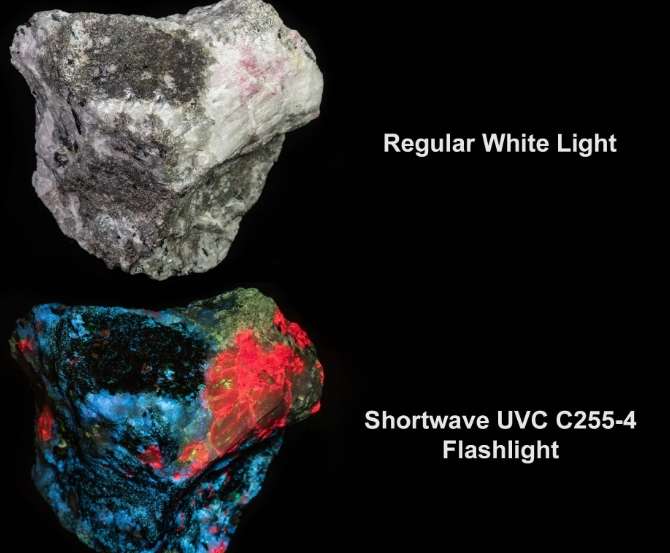
Using a UV flashlight for gemstone inspection is straightforward, but there are a few tips to get the best results:
- Choose the Right Wavelength: For most gemstone identification and fluorescence, a UV-A flashlight with a wavelength of 365–395 nm is sufficient and safe for use.
- Proper Distance: Hold the flashlight 2–5 inches from the gemstone to see the fluorescence clearly. If you’re using a more powerful flashlight, you may need to adjust the distance to avoid overexposing the stone.
- Dark Environment: UV light is more effective in a dark environment. Try using your UV flashlight in a dimly lit room or during the evening for the best visibility of fluorescence.
- Inspect from Different Angles: Fluorescence may vary depending on the angle at which the UV light hits the gemstone. Rotate the gemstone and inspect it from multiple angles to spot hidden characteristics.
Additional Tips for Gemstone Fluorescence Inspection
- Check for Consistent Fluorescence: Some gemstones may have areas that fluoresce more intensely than others. Inconsistent fluorescence could indicate that the gemstone has been treated.
- Watch for Color Changes: Fluorescence can cause gemstones to change color, with some stones glowing blue, green, red, or even yellow under UV light. Take note of these colors, as they may help you identify the stone.
- Use a UV flashlight with adjustable beam: Some models offer the option to adjust the beam from a wide flood to a focused spot, which can be useful for inspecting large gemstones or intricate inclusions.
Conclusion
UV flashlights are essential tools for anyone working with gemstones, whether you’re identifying specimens, inspecting for inclusions, or verifying authenticity. The best UV flashlights for gemstones emit light at the 365 nm (UV-A) wavelength, as this is the most effective and safest option for revealing fluorescence.
When choosing a UV flashlight, consider factors such as power output, portability, and battery type. Models like the Tank007 K9A5 are great for beginners, while more advanced options like the Streamlight 51018 or Nitecore NU05 are suited for professional gemologists and large-scale inspections.
The post UV Flashlight for Gemstones: A Complete Guide to Choosing the Right Tool appeared first on Tank007.
]]>The post UV Flashlight for Gemstones: A Comprehensive Guide appeared first on Tank007.
]]>How UV Light Affects Gemstones

UV light interacts with gemstones in a unique way. Certain minerals and gemstones react to UV light by fluorescing, meaning they absorb UV light and re-emit it as visible light. This fluorescence can be seen as a glow, typically in different colors. This property is not only useful for identifying natural stones but also helps in distinguishing genuine gemstones from imitations.
- Fluorescence: The ability of a gemstone to glow under UV light. The glow can vary in color, brightness, and pattern, depending on the mineral composition.
- Wavelengths: UV light typically used for gemstone testing is in the 365nm to 395nm range.
Types of UV Light for Gemstone Examination
There are several types of UV flashlights, and the appropriate one depends on the type of gemstone being examined and the purpose of the examination. The two most commonly used UV light wavelengths for gemstone examination are 365nm and 395nm.
365nm UV Flashlight
- Best For: More accurate fluorescence detection.
- Applications: Identifying diamonds, sapphires, rubies, and other gemstones that fluoresce strongly under pure UV light.
- Advantages: Provides the purest form of UV light, which can help detect subtle fluorescence in gemstones that would not be visible under other wavelengths.
395nm UV Flashlight
- Best For: A more general-purpose tool for fluorescence detection.
- Applications: Suitable for a wide range of gemstones like garnet, jade, and opals.
- Advantages: Slightly more visible light than 365nm, which can sometimes help illuminate broader fluorescence patterns in gemstones.
| Wavelength | UV Flashlight Type | Applications |
|---|---|---|
| 365nm | Pure UV light | Most effective for identifying gemstones with strong fluorescence, e.g., diamonds, rubies. |
| 395nm | UV light with some visible light | Ideal for gemstones like opals, jade, and garnet. |
Why Use a UV Flashlight for Gemstone Identification?
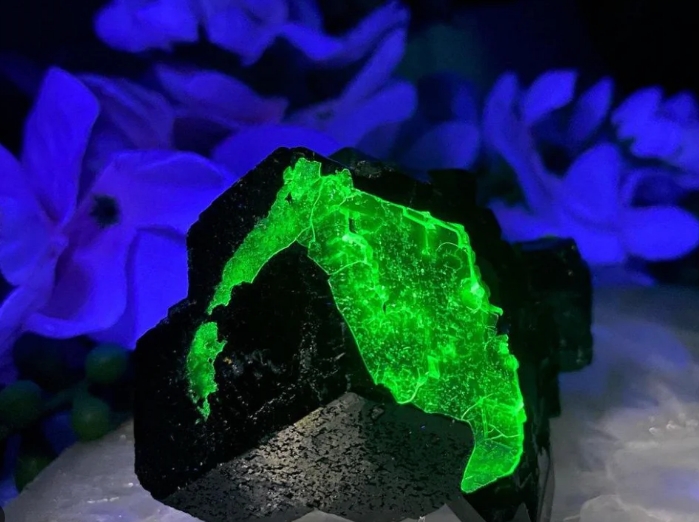
1. Identifying Authentic Gemstones
UV flashlights are widely used to identify authentic gemstones. Many synthetic or imitation stones do not exhibit the same fluorescence properties as natural gemstones. Using UV light can help you verify whether a gemstone is natural or synthetic.
- Natural vs. Synthetic: Many natural gemstones, such as diamonds and rubies, fluoresce under UV light, while synthetic versions may not.
- Example: A natural diamond may show blue fluorescence, while a synthetic diamond may show no fluorescence or a different color under UV light.
2. Revealing Internal Inclusions (Inclusions)
Some gemstones have internal inclusions that are visible under UV light. UV light can help detect inclusions in diamonds, sapphires, and emeralds, which can provide important clues about the authenticity of the gemstone.
| Gemstone | Fluorescence Under UV | Inclusion Type |
|---|---|---|
| Diamonds | Blue fluorescence under UV light | Inclusions can glow, providing clues to the gemstone’s origin. |
| Sapphires | Fluorescent glow (blue or orange) | Internal fractures and inclusions become visible. |
| Emeralds | Green fluorescence | Fluorescence helps reveal natural inclusions. |
3. Checking for Treatments or Enhancements
UV flashlights can help detect treatments or enhancements that have been applied to gemstones. Some gemstones, like jade or emeralds, are commonly treated to improve their appearance, and a UV flashlight can reveal these treatments.
- Jade: Treated jade may show an uneven fluorescence pattern under UV light, indicating that it has been treated with oils or dyes.
- Emeralds: Certain treatments, like oiling, can alter the way light interacts with the gemstone, making UV light an important tool for revealing treatments.
Top Gemstones and Their UV Fluorescence Characteristics
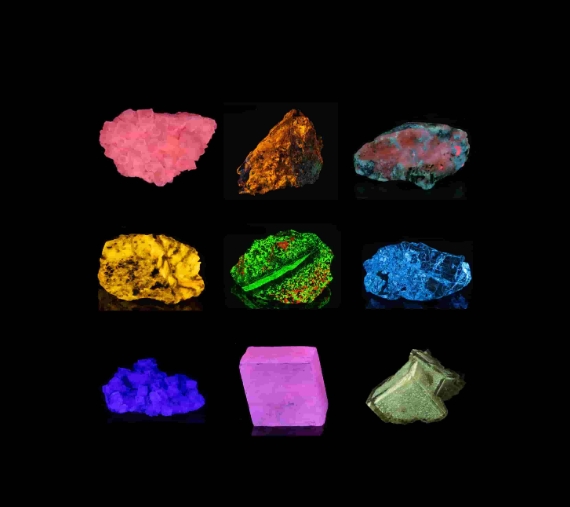
| Gemstone | Fluorescence Under UV Light | Wavelength |
|---|---|---|
| Diamonds | Blue fluorescence, some may not fluoresce | 365nm |
| Rubies | Strong red or purple fluorescence | 365nm |
| Sapphires | Blue or orange fluorescence | 365nm/395nm |
| Emeralds | Green fluorescence, sometimes no fluorescence | 365nm |
| Jade | Fluoresces green or yellow, depending on the treatment | 395nm |
| Opals | Play-of-color fluorescence | 365nm |
| Garnets | Fluorescence can range from red to orange | 395nm |
How to Use a UV Flashlight for Gemstone Identification
Step 1: Choose the Correct Wavelength
- 365nm UV flashlight: Best for gemstones like diamonds and rubies.
- 395nm UV flashlight: Ideal for opals, jade, and garnets.
Step 2: Turn Off All Lights
For optimal fluorescence visibility, perform the test in a darkened area to prevent visible light from interfering with UV light.
Step 3: Shine UV Light on the Gemstone
Hold the flashlight at a distance of about 3-6 inches from the gemstone and shine the UV light directly onto its surface. Observe how the gemstone reacts to the UV light and look for any fluorescence patterns or colors.
Step 4: Analyze the Fluorescence
- Strong fluorescence indicates a natural gemstone, while weak or no fluorescence might suggest a synthetic or treated gemstone.
- Color and patterns of the fluorescence can give you clues about the gemstone’s authenticity and its treatment history.
Recommended UV Flashlight for Gemstone Identification: TANK007 K9A5
The TANK007 K9A5 USB 365nm UV Torch is an ideal UV flashlight for gemstone identification. Here’s why:
- 365nm Wavelength: Delivers pure UV light that reveals fluorescence in most gemstones.
- High Brightness: Provides sufficient UV light intensity to identify even subtle fluorescence.
- Portable and Rechargeable: USB rechargeable and compact, perfect for professionals and gemstone enthusiasts on the go.
- Durable: Built with robust materials to withstand frequent use in gemstone examinations.
Conclusion
A UV flashlight is an invaluable tool for gemstone identification, helping you determine authenticity, detect treatments, and reveal internal inclusions. Whether you’re a professional gemologist or an enthusiast, using the right UV flashlight can make the process of gemstone examination much easier and more accurate.
The post UV Flashlight for Gemstones: A Comprehensive Guide appeared first on Tank007.
]]>The post Top 5 UV Flashlights for Minerals Detection in 2025 appeared first on Tank007.
]]>Among them, we’ll introduce the Tank007 K9A5, a cutting-edge model that stands out for its efficiency and portability.
What to Look for in a UV Flashlight for Minerals Detection

Before diving into the list, here are the key features to consider when choosing a UV flashlight:
- Wavelength: 365nm is the ideal wavelength for minerals detection.
- Brightness: Look for at least 3W for effective illumination.
- Durability: Sturdy materials like aluminum alloy are best for outdoor use.
- Battery Life: A rechargeable lithium-ion battery ensures longer usability.
Top 5 UV Flashlights for Minerals Detection
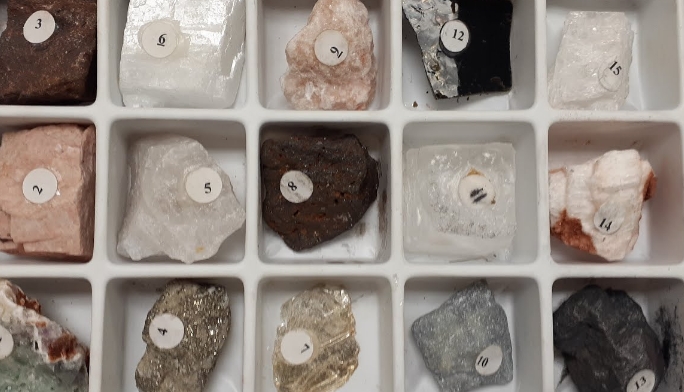
| Model | Wavelength | Brightness | Battery Type | Key Features | Price Range |
|---|---|---|---|---|---|
| Tank007 K9A5 | 365nm | 5W | USB Rechargeable | Compact design, powerful beam, durable aluminum body | $$ |
| Nitecore CU6 | 365nm | 3W | Rechargeable Lithium-ion | Dual light source (UV & white), rugged construction | $$$ |
| Convoy S2+ UV | 365nm | 3.7W | Rechargeable Lithium-ion | Budget-friendly, solid aluminum build, great for beginners | $ |
| UV Beast V3 | 365nm | 6W | Rechargeable Lithium-ion | Extremely powerful beam, large coverage area | $$$$ |
| Sper Scientific 365NM | 365nm | 4W | 3 AA Batteries | Lightweight, easy to use, great for casual mineral hunters | $$ |
Detailed Review of the Tank007 K9A5
Tank007 K9A5
The Tank007 K9A5 UV flashlight is a top-tier choice for both professionals and enthusiasts in mineral detection.
- Wavelength: Emits a precise 365nm wavelength for accurate fluorescence detection.
- Brightness: 5W power ensures excellent visibility in both indoor and outdoor environments.
- Material: Built from durable aluminum alloy, making it lightweight yet resistant to wear and tear.
- Battery: Equipped with a USB rechargeable lithium-ion battery for extended runtime and convenience.
- Special Features: Portable design with a sleek finish, making it perfect for fieldwork.
Why Choose the Tank007 K9A5?
Its balance of power, portability, and price makes it an excellent investment for mineral enthusiasts who demand quality and reliability.
Comparison Table
| Feature | Tank007 K9A5 | Nitecore CU6 | Convoy S2+ UV | UV Beast V3 | Sper Scientific |
|---|---|---|---|---|---|
| Wavelength | 365nm | 365nm | 365nm | 365nm | 365nm |
| Brightness | 5W | 3W | 3.7W | 6W | 4W |
| Battery | USB Rechargeable | Rechargeable | Rechargeable | Rechargeable | 3 AA Batteries |
| Build | Aluminum Alloy | Aluminum Alloy | Aluminum Alloy | Aluminum Alloy | Plastic |
| Price | $$ | $$$ | $ | $$$$ | $$ |
Conclusion
For 2025, the UV flashlight market offers many options, but the Tank007 K9A5 shines as a top choice for its precision, durability, and affordability. Whether you’re a professional or a hobbyist, this flashlight meets all the requirements for effective mineral detection.
Ready to elevate your mineral hunting experience? Explore the Tank007 K9A5 today!
The post Top 5 UV Flashlights for Minerals Detection in 2025 appeared first on Tank007.
]]>The post How to Choose the Best UV Flashlight for Minerals appeared first on Tank007.
]]>Key Factors to Consider
1. Wavelength
The wavelength of the UV light is the most critical factor for minerals detection.
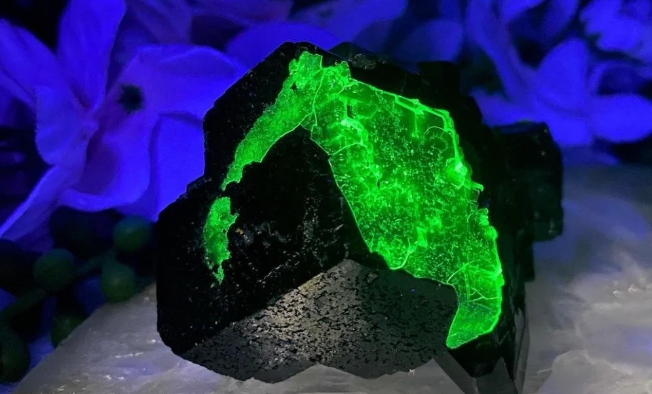
| Wavelength | Applications | Advantages | Disadvantages |
|---|---|---|---|
| 365nm | Best for mineral hunting, professional use | Clear fluorescence with minimal visible light interference | Higher cost |
| 395nm | Suitable for casual users and beginners | Affordable and widely available | Produces more visible purple light, reducing fluorescence contrast |
Recommendation: If you are serious about mineral detection, choose a 365nm UV flashlight for better accuracy.
2. Brightness
The brightness of the flashlight, measured in milliwatts (mW) or lumens, determines how effectively it illuminates minerals.
| Brightness Level | Use Case | Recommendation |
|---|---|---|
| Low (1–3W) | Close-range inspections, small mineral samples | Suitable for beginners |
| Medium (3–5W) | Moderate-sized samples, indoor use | Versatile and balanced |
| High (5W+) | Large mineral deposits, outdoor exploration | Ideal for professionals |
Tip: Ensure the brightness level matches your typical use cases to avoid unnecessary power consumption.
3. Material and Build Quality
The durability of a UV flashlight is essential for outdoor and rugged use.

| Material | Benefits | Examples |
|---|---|---|
| Aluminum Alloy | Lightweight, corrosion-resistant, durable | Common in professional flashlights |
| Plastic | Affordable, lightweight | Suitable for casual use |
| Stainless Steel | Extremely durable but heavier | Best for demanding environments |
Recommendation: Opt for aluminum alloy for a balance between durability and weight.
4. Battery Type
Battery type affects the runtime, convenience, and overall usability of your flashlight.
| Battery Type | Advantages | Disadvantages |
|---|---|---|
| AA/AAA | Widely available, cost-effective | Shorter runtime |
| Rechargeable Lithium-ion (e.g., 18650) | Longer runtime, powerful | Requires a charger, higher initial cost |
| Built-in Rechargeable | Convenient, eco-friendly | Limited replacement options |
Tip: For frequent users, lithium-ion batteries are the most reliable choice.
Choosing the Right UV Flashlight: A Comparison Table
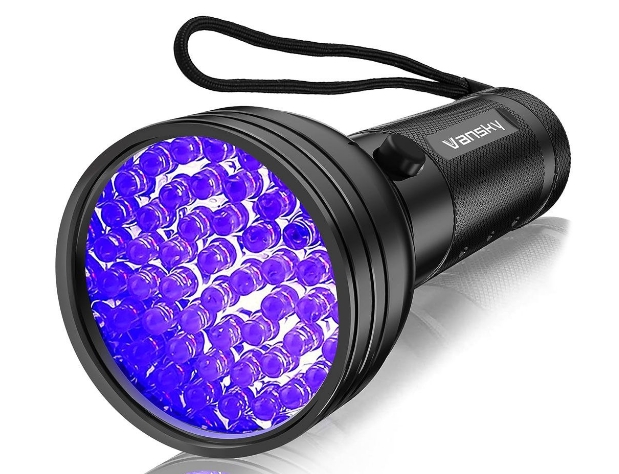
| Feature | Casual Use | Intermediate | Professional |
|---|---|---|---|
| Wavelength | 395nm | 365nm | 365nm |
| Brightness | Low (1–3W) | Medium (3–5W) | High (5W+) |
| Material | Plastic | Aluminum Alloy | Aluminum Alloy/Stainless Steel |
| Battery | AA/AAA | Rechargeable Lithium-ion | Rechargeable Lithium-ion |
| Price Range | Low | Moderate | High |
Top Recommendation: Tank007 AA02
For those looking for a high-quality UV flashlight, the Tank007 AA02 is an excellent choice.
- Wavelength: 365nm for precise mineral detection
- Brightness: 3W output for versatile use
- Material: Durable aluminum alloy for outdoor durability
- Battery: Rechargeable lithium-ion for extended runtime
Conclusion
Selecting the best UV flashlight for minerals involves balancing wavelength, brightness, material, and battery type based on your needs and budget. The Tank007 AA02 stands out as a versatile and reliable option, especially for serious mineral enthusiasts.
If you’re ready to enhance your mineral hunting experience, explore our range of UV flashlights to find the perfect fit!
The post How to Choose the Best UV Flashlight for Minerals appeared first on Tank007.
]]>The post Understanding the Specifications of a UV Flashlight for Minerals appeared first on Tank007.
]]>Key Specifications of a UV Flashlight for Mineral Identification
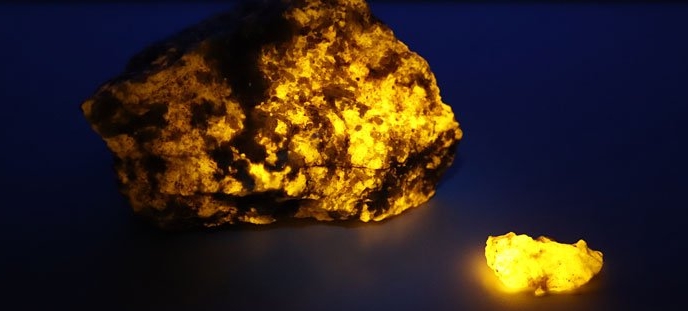
- Wavelength (nm)
The wavelength determines the type of UV light emitted by the flashlight. Most UV flashlights for mineral identification fall into two categories:- 365nm UV Light: Produces minimal visible light, making it ideal for professional mineral inspection as it highlights fluorescence more effectively.
- 395nm UV Light: Emits more visible purple light and is better suited for general-purpose use.

- Power Output and Brightness
A higher power output ensures better fluorescence, especially when inspecting minerals in daylight or brighter environments. Look for flashlights with at least 3W power output for optimal performance.
- Build Quality
Durability is essential for fieldwork. A reliable UV flashlight should:- Be waterproof and dustproof (IPX-rated).
- Feature an aluminum alloy body for resistance to wear and tear.
- Be lightweight and portable.
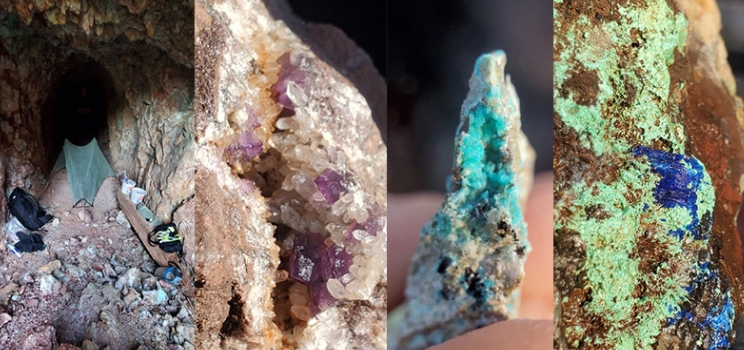
- Battery Life
Mineral hunting often requires extended usage. Flashlights powered by AA batteries or rechargeable lithium-ion batteries are ideal for prolonged operation.
- Beam Uniformity
A uniform UV beam ensures consistent illumination of minerals, preventing dark or overly bright spots during inspection.
Specifications Comparison Table
| Specification | Tank007 AA02 (Recommended) | Standard UV Flashlight |
|---|---|---|
| Wavelength | 365nm | 365nm or 395nm |
| Power Output | 3W | 1-3W |
| Body Material | High-grade Aluminum Alloy | Varies (often lower grade) |
| Battery | AA Battery Powered | AA or Rechargeable |
| Beam Uniformity | Professional Optical Design | Inconsistent |
| Use Cases | Minerals, Gems, Amber, and Fluorescence | General UV Applications |
Why Tank007 AA02 is Ideal for Mineral Identification

The Tank007 AA02 UV flashlight is specifically designed for professionals and hobbyists in the mineral and gemstone industries. Its 365nm wavelength ensures accurate and detailed fluorescence detection, while its 3W power output provides a strong and uniform beam. The durable aluminum body and compact design make it perfect for fieldwork.
 Check out the Tank007 AA02: Click here to learn more
Check out the Tank007 AA02: Click here to learn more
Tips for Using a UV Flashlight for Minerals Identification
- Choose the Right Environment: Use the flashlight in a dark environment for maximum visibility of fluorescence.
- Hold the Flashlight Close: Keep the UV flashlight 1-5 inches away from the mineral surface for the best results.
- Safety First: Always wear UV-blocking glasses to protect your eyes during prolonged use.
- Inspect with Care: Some minerals fluoresce faintly; patience is key.
Conclusion
Understanding the specifications of a UV flashlight is critical for selecting the right tool for mineral identification. A flashlight like the Tank007 AA02, with its precise 365nm wavelength, high power output, and durable build, is the perfect companion for both amateur and professional mineral hunters.
Take your mineral inspection to the next level with the Tank007 AA02. Visit Tank007.com to learn more and make your purchase today!
The post Understanding the Specifications of a UV Flashlight for Minerals appeared first on Tank007.
]]>The post UV Flashlight Jewelry Jade Appraisal Guide appeared first on Tank007.
]]>Introduction
UV flashlights, particularly those operating at specific wavelengths like 365nm, play a critical role in identifying and appraising jade and other jewelry. By understanding how UV light interacts with different materials, jewelers and collectors can make informed decisions about a piece’s quality and authenticity.
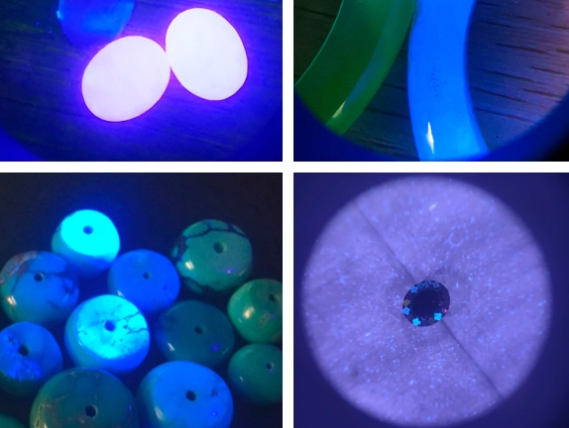
Why Use UV Flashlights in Jewelry and Jade Appraisal?
UV light is a valuable tool in appraisals for:
- Identifying Fluorescence: Detect fluorescent properties in diamonds, jade, and other gemstones.
- Spotting Inclusions: Locate internal imperfections like cracks or foreign particles.
- Authenticity Testing: Distinguish between natural and synthetic stones.
- Surface Quality Check: Highlight uneven surfaces or coatings.
Step-by-Step Guide for UV Flashlight Jewelry Appraisal
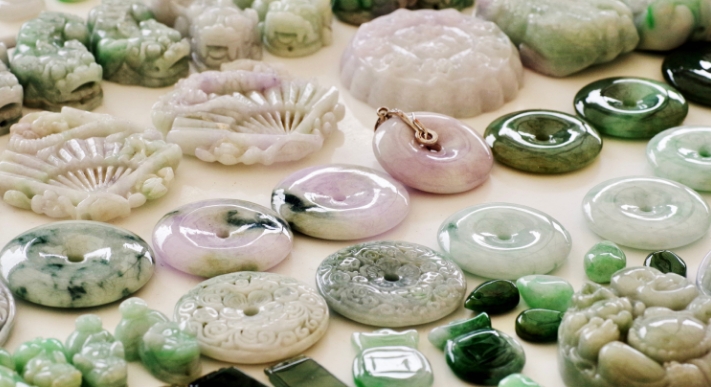
| Step | Action | Details |
|---|---|---|
| 1 | Choose the Right UV Flashlight | Use a high-quality 365nm UV flashlight like the Tank007 UVC31. Ensure it provides consistent and uniform light. |
| 2 | Prepare the Workspace | Use a dark room or a low-light area for better visibility of fluorescence. |
| 3 | Position the Jewelry or Jade | Place the piece on a neutral, non-reflective surface to prevent distractions from surrounding light. |
| 4 | Illuminate the Item | Shine the UV light directly onto the surface, keeping the flashlight steady for consistent results. |
| 5 | Observe Fluorescence and Features | Note the presence or absence of fluorescence, its intensity, and its color. Check for cracks, inclusions, and other irregularities. |
| 6 | Compare with Known Standards | Use reference materials or trusted guides to interpret your findings accurately. |
UV Wavelengths and Their Effectiveness in Appraisal
| Wavelength | Uses | Details |
|---|---|---|
| 365nm | Jewelry & jade appraisal | Highlights fine details and authenticates natural stones. |
| 395nm | General inspection | Detects surface-level fluorescence but may miss finer details. |
Factors to Consider When Choosing a UV Flashlight
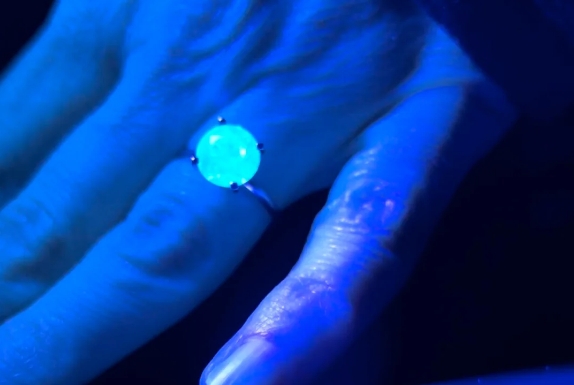
- Wavelength: 365nm is the gold standard for jewelry and gemstone analysis.
- Power Output: High-powered UV flashlights ensure better visibility of fluorescence.
- Battery Life: Choose models with extended runtime for longer inspections.
- Design: Lightweight, portable designs with a focus on durability are ideal.
Common Observations and Interpretations
| Observation | Possible Interpretation |
|---|---|
| Green fluorescence | Indicates natural jadeite or emerald. |
| Blue fluorescence | Suggests treated or synthetic jade. |
| No fluorescence | May imply untreated jade or a fake piece. |
| Visible cracks/inclusions | Lowers quality; impacts value. |
Conclusion
Using UV flashlights, such as the Tank007 UVC31, allows jewelers and collectors to gain deeper insights into the quality and authenticity of jade and jewelry. With the proper techniques and equipment, you can confidently assess and appraise your precious pieces.
This guide equips you with the knowledge to make the most of UV flashlight technology in jewelry appraisal. For professional-grade UV flashlights, visit Tank007.
The post UV Flashlight Jewelry Jade Appraisal Guide appeared first on Tank007.
]]>The post How to Use a UV Flashlight for Mineral Identification: Step-by-Step Guide appeared first on Tank007.
]]>Mineral identification using UV flashlights is a fascinating and practical technique widely used by geologists, collectors, and hobbyists. UV flashlights allow you to observe fluorescence, phosphorescence, and other unique optical properties of minerals that are invisible under normal light. This guide will take you step-by-step through the process of using a UV flashlight for mineral identification, from preparation to observation and analysis.
1. Understanding UV Flashlights for Mineral Identification
UV flashlights come in three primary types based on their wavelength:
| Type | Wavelength Range (nm) | Best For | Examples of Fluorescent Minerals |
|---|---|---|---|
| UVA (Longwave) | 320–400 | Common field inspections | Fluorite, Calcite |
| UVB (Midwave) | 280–320 | Specialized research | Few select phosphorescent minerals |
| UVC (Shortwave) | 100–280 | Laboratory and detailed inspections | Willemite, Scheelite |
Key Takeaway: For most hobbyists and collectors, UVA (365 nm) flashlights are sufficient, while UVC is reserved for professional setups.
2. Essential Equipment for Mineral Identification
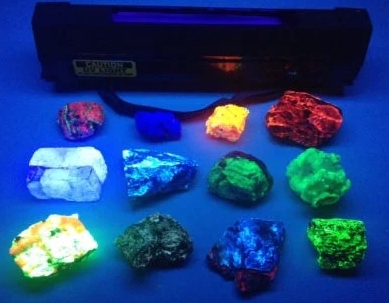
Before starting, ensure you have the following tools:
| Tool | Purpose |
|---|---|
| UV Flashlight (UVA or UVC) | For illuminating minerals |
| Safety Glasses | Protect eyes from UV exposure |
| Dark Room or Environment | Essential for clear observation |
| Mineral Reference Guidebook | Cross-reference observed effects |
| Magnifying Glass | Observe finer details |
| Protective Gloves | Prevent direct skin exposure |
3. Step-by-Step Guide to Using a UV Flashlight for Mineral Identification
Step 1: Choose the Right UV Flashlight
- Use a 365 nm UVA flashlight for general identification.
- Use a 254 nm UVC flashlight for detailed fluorescence analysis.
Step 2: Prepare the Environment
- Work in a completely dark room to eliminate interference from ambient light.
- Ensure your UV flashlight batteries are fully charged.
Step 3: Arrange Your Minerals
- Lay out your mineral samples on a non-reflective surface (e.g., black cloth).
- Keep sufficient space between each mineral to avoid light interference.
Step 4: Illuminate the Minerals
- Shine the UV flashlight directly onto the mineral surface.
- Observe carefully for fluorescence, phosphorescence, or reflection effects.
Step 5: Record Observations
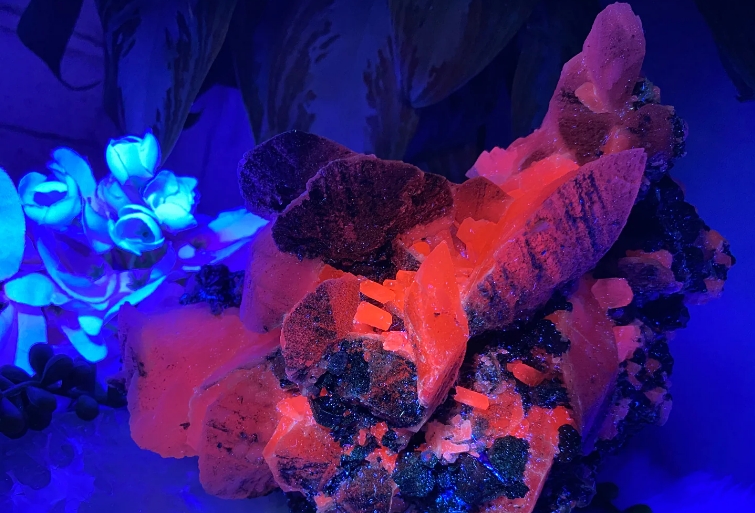
- Note the color, intensity, and pattern of the fluorescence.
- Use a mineral reference chart to match observed properties with known minerals.
Step 6: Cross-Check with Other Light Sources
- Compare results under normal light and incandescent light.
- Check if the mineral reacts differently under shortwave vs longwave UV light.
4. Common Fluorescent Minerals and Their UV Reactions
| Mineral Name | Fluorescent Color | Type of UV Light Required |
|---|---|---|
| Fluorite | Blue, Green, Purple | Longwave UVA |
| Willemite | Bright Green | Shortwave UVC |
| Scheelite | Blue-White | Shortwave UVC |
| Calcite | Red, Orange, Pink | Longwave UVA |
| Autunite | Yellow-Green | Shortwave UVC |
5. Tips for Accurate Mineral Identification
- Stability of Light Source: Ensure your UV flashlight emits a stable light beam without flickering.
- Check Multiple Wavelengths: Some minerals react differently to UVA and UVC light.
- Document Observations: Take pictures under UV light for future reference.
- Use Safety Precautions: Avoid prolonged exposure to UV light on skin or eyes.
6. Common Mistakes to Avoid

| Mistake | Solution |
|---|---|
| Using ambient light | Work in a fully darkened space. |
| Incorrect wavelength | Ensure the correct UV light type for your minerals. |
| Skipping safety gear | Always wear protective UV glasses and gloves. |
| Misinterpreting fluorescence | Cross-reference with mineral charts. |
7. Practical Example: Identifying Fluorite with a UV Flashlight
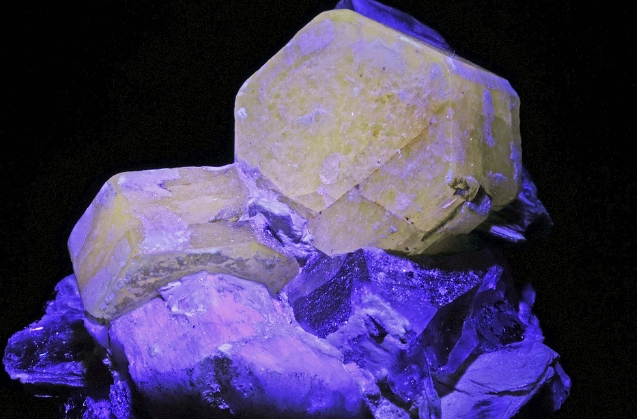
Step 1: Place the Fluorite sample on a black cloth.
Step 2: Shine a 365 nm UVA flashlight directly onto the sample.
Step 3: Observe for blue or green fluorescence.
Step 4: Turn off the flashlight and check for phosphorescence (afterglow).
Step 5: Compare with a reference chart to confirm the mineral.
Result: If the sample emits a blue or green glow, it is likely Fluorite.
8. Comparison Between UVA and UVC for Mineral Identification
| Feature | UVA (365 nm) | UVC (254 nm) |
|---|---|---|
| Ease of Use | Easy, portable | Requires safety precautions |
| Best For | General fieldwork | Advanced lab analysis |
| Safety Requirements | Minimal precautions | Strict protective measures |
| Mineral Response | Moderate fluorescence | Intense fluorescence |
9. Conclusion
Using a UV flashlight for mineral identification is a powerful technique that combines science with discovery. By understanding the different UV wavelengths, following proper procedures, and using the right tools, you can unlock hidden properties of minerals with ease.
Takeaway: Invest in a reliable UV flashlight, follow safety measures, and practice consistent observation techniques for the best results.
The post How to Use a UV Flashlight for Mineral Identification: Step-by-Step Guide appeared first on Tank007.
]]>